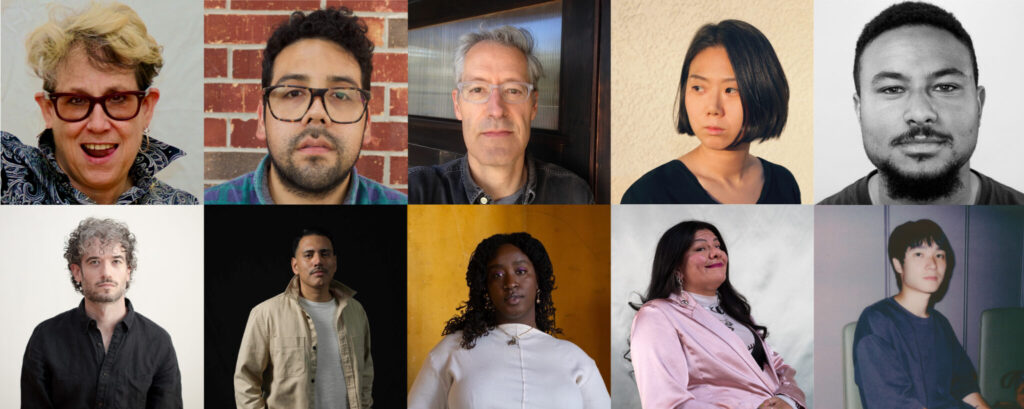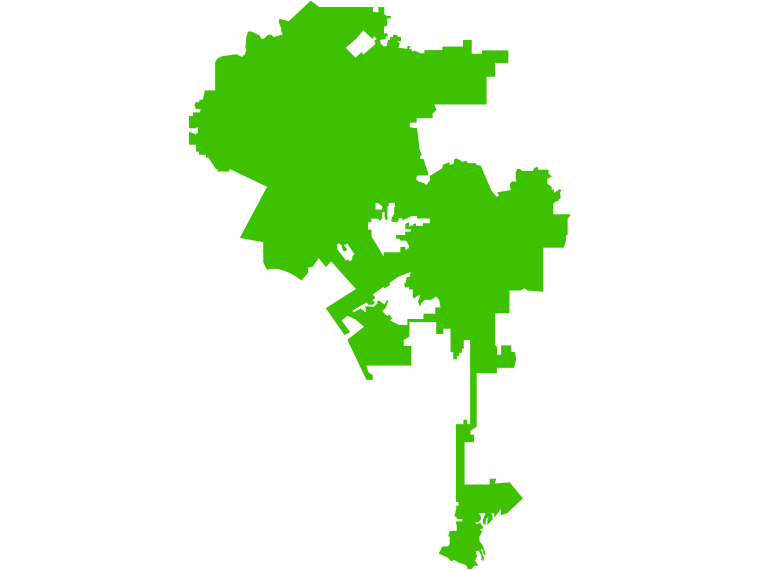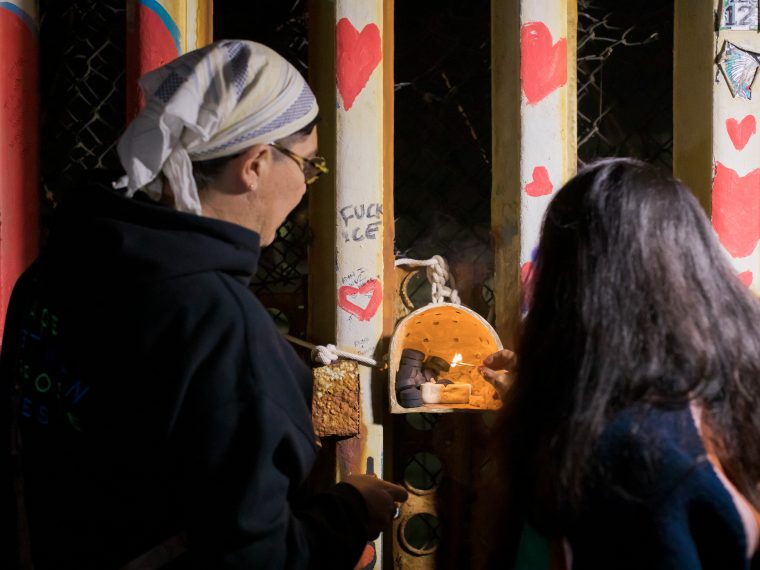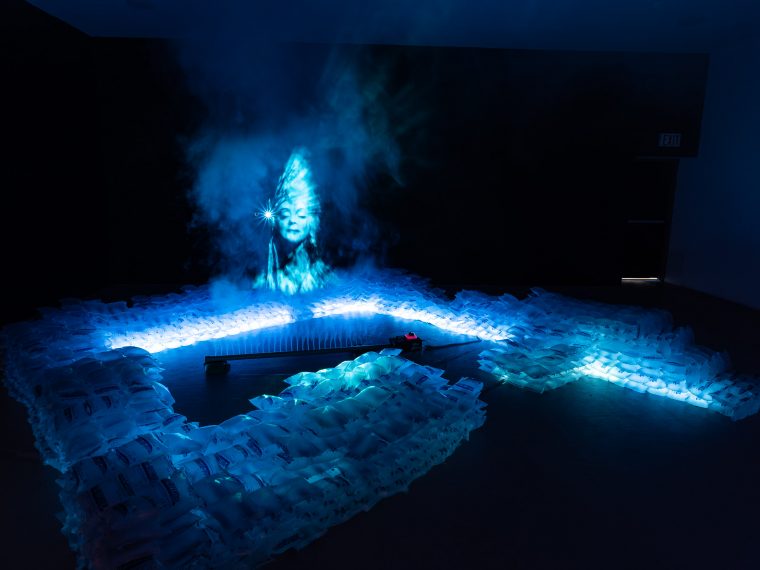LACE ANNOUNCES $70,000 IN AWARDED ARTIST GRANTS THROUGH THE LIGHTNING FUND AND JACKI APPLE AWARD FOR PERFORMANCE AND ARTIST PROJECTS

LACE is thrilled to announce the selected artists receiving the Lightning Fund Artist Grant and the recipient for the inaugural Jacki Apple Award for Performance and Artist Projects! We are grateful to have received over 270 applications from artists in LA County. This year, ten Los Angeles-based artists are awarded a $6,000 grant for the creation and completion of a project, and one artist is awarded with a $10,000 grant.
This year’s Lightning Fund and Jacki Apple Award panelists were Soo Kim, Claude Smith, and Joseph Valencia. The panelists were deeply impressed with the creativity and ambition of the submitted proposals. “This year’s Lightning Fund cohort is a compelling cross-section of the diverse artists and practices at work in LA today, and a testament to LACE’s longstanding commitment to support artists by getting funding directly into their hand.” Smith said. “By allowing them to take risks, experiment and do what they do best, artists are being empowered to make and share deeply moving projects with the public that might not otherwise get made.”
The inaugural awardee of the Jacki Apple Award for Performance and Artist Projects is LA-based performance artist Marcus Kuiland-Nazario. “Jacki Apple, in her 1994 High Performance article, saw performance as ‘an investigatory, exploratory, experimental, improvisational, metaphoric form engaged in all sorts of ritual, alchemy and transformation…Be it minimalist, flamboyant, irreverent, meditational, political, conceptual, etc., performance art is foremost a perceptual intervention.’ Marcus Kuiland-Nazario has been doing that kind of intervention for many years, and is the ideal choice for her legacy fund’s first awardee,” states the Jacki Apple Fund (Margie Bank, Stuart Jackson-Hughes, Jeff McMahon, Deborah Oliver, Emily Waters). “His multidisciplinary work within the Afro-diaspora, Latino and GLBTQ communities is a critical part of the broadening of the LA art world that Jacki so strongly supported in her writing. Coincidentally, Marcus appeared in her 1989 Fluctuations from the Field site-specific performance in Santa Monica. He tells the Fund, ‘I became a performance artist partially because of reading Jacki and others in High Performance.’“
Artists awarded with the Lightning Fund and Jacki Apple Award were selected based on their artistic merit, the potential of their project’s impact on their community, and the capacity of their project to be achieved within the next year.
2024 LIGHTNING FUND RECIPIENTS
Jerri Allyn
“Eros… personifies creative power, harmony… I speak of eros as an assertion of the life force of women… which we are now reclaiming in our language, our history, our dancing, our loving, our work, our lives.” –Audre Lorde
Sex: Celebrated Contested yet Everywhere is a series of photomontage portrait banners that explores comprehensive sex-ed, sex-positive activities, and sexworkers’ rights by uplifting colleagues in pro-sex gigs. Allyn examines how these topics intersect in her life and influence one another—addressing erotic power, health, and human rights. Sex derives its stance from the 1850s Free Love Movement which called for “freedom from state and moralistic interference.” Allyn elevates diverse erotic laborers by striving for confident, elegant portrayals inspired by historical figures, to combat stigma.
“Eroticism is… an experience of aliveness which beats back deadness… In these moments of crisis in which the shadow of death is ever-present… Creativity is where Eroticism lives.” –Esther Perel
Francis Almendarez
Navigating the Archives Within is an ongoing series of experimental workshops and performances that explore the distinctions between “official” narratives, marginalized histories, and subjective memories. Combining original and archival imagery with prose and live improvised music, the project pivots from visual (mis)representations of Latinos in film and media to investigating the origins of “Latin” music and dance. Foregrounding their African and Indigenous roots, the series of workshops and performances will take participants on an autoethnographic journey, redirecting participants from our neoliberal present and colonial past, to manifesting a multitude of Afro-Indigenous futures.
Dave Hullfish Bailey
Keystone Copse proposes a field-based process for imagining, and possibly shaping, the distant futures of Los Angeles. The approach is a collective form of speculation-based pragmatism grounded in intra-species relations, and the likelihood of radical discontinuities ahead. It asks: which trees, shrubs or other plants might emerge as ecological and/or cultural keystone species within still-forthcoming biological niches and yet-to-be-knowable modes of living? By working together to plant these now, in places where they could conceivably anchor lifewebs much later, it sows seeds beyond the horizon line of planning, in the more fluid ground of inter-generational dreaming. Keystone’s conversational exchanges, publications, and horticultural experiments will function as heuristic gambles, or what localization theorists might call “adaptive muddling.” More assuredly than shady groves, the project means to produce occasions and communities where Angelenos can, right now, start practicing cooperation amidst uncertainty, care for land, empathy for unknown relatives, and mutual reliance.
Jisoo Chung
How Shukowsky Became Zakotsky imagines the personal stories of six immigrants who attempted to change their names through the official Immigration and Naturalization Service (INS) between 1912 and 1917. In one such instance in 1915, Wolf Zakotsky wrote that he wanted to change his name back to his original name, Shukowsky, in order to match his sons’ last names as he could not claim them as one family with different last names. There are other such cases where these letters reveal personal and intimate information in contrast to the coldness of the bureaucratic document form. A multi-channel video, How Shukowsky Became Zakotsky, tracks these immigrants’ profiles to imagine their fictional narratives. By interweaving the stories of fiction and non-fiction, and past and present, the project is an act of searching subjectivities lost in name and language through its mistranslation and cultural assimilation.
Trevor Jackson
At the intersection of Central and Alondra rests an unexpected pilot’s paradise. The heart of Compton hosts an airfield that isn’t pristine. These planes may not be new, but everything and everyone has grit. Here, pilots opt to build parts instead of buying, making their planes an extension of their character and goals. The do-it-yourself spirit thrives, making no challenge out of reach. Over the past couple years, Jackson has immersed himself in the camaraderie of this community. With camera in hand, he has photographed interactions with the pilots to showcase the uniqueness of this airport. This community is propelled by persistence and doing whatever it takes to make something work. Hangars line the airport. Each exactly the same until you open their doors. Some are used for planes, while others hold cars and even liquid fueled rockets. Through the photographs, Jackson hopes to inspire others to see the beauty at the corner of Central and Alondra.
Matthew Lax
The experimental nonfiction film and installation Gay Men’s Book Club (GMBC) brings together seven homosexuals, all strangers to one another, to discuss the book Elite Capture by Olúfẹ́mi O. Táíwò. Based on an actual book club Lax participated in, this unscripted conversation, facilitated by the artist in collaboration with community organizer, founding member of the Radical Faeries, and Jungian psychologist Dr. Don Kilhefner, explores Táíwò’s concept of elite capture as it relates to community, privilege, organizing, and intersectionality.
GMBC is an intergenerational portrait of the group dynamics found within social environments. GMBC will exist as a feature-length, two-channel installation, a single channel theatrical film, and a decentralized learning platform in the form of a book featuring the film’s transcript, related essays, as well as a website where footage, lesson plans, and research materials can be accessed, encouraging other reading groups and safe spaces for discussion.
Nery Gabriel Lemus
Corky the Bear and Bunchy the Panther is a series of large-scale acrylic ink and charcoal drawings adapted into a children’s book that will be made available across different literary spaces for Black and Brown communities in Los Angeles. This new body of work will expand upon the work Lemus produced for his 2015 exhibition Just So Stories, a show of large-scale drawings made in response to colonialist storyteller Rudyard Kipling’s 1902 book of short stories for children of the same title. These central figures in the book are named after prolific Chicano activist Rudolfo “Corky” Gonzales and Southern California Black Panther chapter founder Alprentice “Bunchy” Carter. Lemus’s artistic practice has long explored the divisions between LA’s Black and Latinx communities with the hopes of bringing unity to both cultures; he sees Corky the Bear and Bunchy the Panther as an artistic and cultural intervention.
yétúndé olagbaju
Expanding the For Edmonia project, Together, Sculpting delves into Afro-Indigenous artist Edmonia “Wildfire” Lewis’s life and legacy. Employing archival documents, interviews, and extensive research, the project will craft an interactive archive spotlighting Edmonia’s artistic legacy and that of other ancestral and contemporary Black and Indigenous sculptors.
This archive serves as a platform for broader discussions in preservation, archaeology, public art, and monument creation. Through workshops, artist talks, and convenings, ‘Together, Sculpting’ will unite scholars, museum professionals, conservationists, culture bearers, researchers, and artists to address a fundamental question: How do we sculpt and tend to our own legacies?”
Jaklin Romine
I want to Roll and walk where my grandma once danced/ Quiero rodar y caminar donde una vez bailó mi abuela will be a site specific installation and performance in Boyle Heights. For the past 8 years, Romine has developed ACCESS DENIED, a project series with multiple performances where she sits outside of galleries and artist spaces that are physically inaccessible. Romine’s new project departs from the ACCESS DENIED series, and is an artistic intervention where she reclaims public and private spaces in Los Angeles that have become more accessible. This multi-media performance will be activated by a floral procession and collaborators.
Romine’s multi-media project will honor her grandmother—a central figure in her artistic practice—and the East Los Angeles sites where she danced and experienced moments of joy. The performance element will be recorded and available online/for screenings and Romine will publish a publication on the project.
Yanbin Zhao
Where the Sea Stands Still is an experimental documentary that explores and mediates through the bodily experience of Chinese immigrants in the United States during the years of the Chinese Exclusion Act. Through historical archives including reappropriated archival photographs, interrogation documents, interviews, and CGI, the film fabricates a narrative that parallels and mirrors the history of the island as a metaphor—the suspended space that an alien inhabits and waits for transformation. Following the journey of a fictional character, a Cantonese exile from the future as he landed on the island through a dreaming device, we travel through the island, step into the mountains, the railroads, the gold mines, as well as other haunted remnants with traces of his ancestors, and meditate upon the sensation of loss, displacement, humiliation, as well as the memory of homeland, and the rupture in his identity and his alien skin.
JACKI APPLE AWARD FOR PERFORMANCE AND ARTIST PROJECTS
Marcus Kuiland-Nazario
The preponderance of Botanicas, spiritual shops, and Curanderas in every Los Angeles Latin American and African American neighborhood proves the large numbers and variety of spiritual practices that Angelenos are engaged in. Threnody is an interdisciplinary performance installation that explores how grief is experienced and shared through the lens of these cultural and spiritual traditions, ceremonies, rituals, and Kuiland-Nazario’s practice based in the traditions of the African Diaspora. He states, “I can’t stop thinking about grief and having it too. We have lost over a million people to COVID-19, and we haven’t mourned that loss. I’m still grieving about the last pandemic I survived.” Threnody is a syncretic work reflecting the collective grief that we have not been able to share together publicly and a celebration of our mortality.
PANELISTS FOR 2024 PRESENTATION SUBMISSIONS
Soo Kim
Soo Kim’s work has been the subject of solo exhibitions at Anat Ebgi gallery, Los Angeles; Angles gallery, Los Angeles; Sandroni Rey gallery, Los Angeles; Julie Saul gallery, New York; The Pasadena Museum of California Art; and the Pomona College Museum of Art.
Her work has been included in group exhibitions at the Getty Center, Los Angeles; The 2002 Gwangju Biennale, Korea; Weatherspoon Art Museum, North Carolina; the Orange County Museum of Art; Architecture and Design Museum, Los Angeles; Art Sonje, Korea; Islip Art Museum, New York; the Museum of Photographic Arts, San Diego; Susan Hobbs Gallery, Toronto; Frances Lehman Loeb Art Center at Vassar College, New York; Seoul Museum of Art, Korea; and the Honolulu Museum of Art, among others.
Kim’s work is in public collections, including The Getty Center, The Broad Foundation, The Albright-Knox Art Gallery, the Los Angeles County Museum of Art, Museum of Photographic Arts, San Diego, North Carolina Museum of Art, and The Escalette Collection of Art, Chapman University.
Kim’s public project for LA Metro’s Purple Line subway station will open in 2024. She is a Visual Artist in Community fellow for the El Segundo Cultural Development Program for 2022-2023. A monograph of her work, A Week Inside Two Days, was published in 2018.
Claude Smith
Claude Smith is an arts professional based in Albuquerque, NM. He previously served as Operations Director at 516 ARTS and during his tenure, worked extensively to support artists and exhibition production since 2010. From 2016-2023 he managed the Fulcrum Fund, a partner in the regional regranting program of the Andy Warhol Foundation for the Visual Arts where he managed the distribution of over $725,000 in financial support to more than 300 New Mexico-based artists. Previous curatorial projects at 516 ARTS include 21st Century Cyphers (2019); Karl Hofmann: In the Balance (2017); Off the Charts and Beau Carey: Rise (both 2015). He has written essays and articles for various publications including the New American Paintings blog, Edible New Mexico and Arid Journal among others. He holds bachelor degrees in art history and biology from the University of New Mexico and currently works for the state of New Mexico in the Department of Cultural Affairs in Santa Fe.
Joseph Valencia
Joseph Valencia is a museum curator, educator, and writer. He is Curator of Exhibitions at the Vincent Price Art Museum at East Los Angeles College, where he organizes several contemporary art and historical exhibitions annually and supports the work of living artists through art acquisitions, commissioned projects, digital initiatives, and public programs. His recent group exhibitions include Sonic Terrains in Latinx Art (2022), Liberate the Bar! Queer Nightlife, Activism, and Spacemaking (2019), and Tastemakers & Earthshakers: Notes from Los Angeles Youth Culture, 1943-2016 (2016). He also served on the curatorial team for Laura Aguilar: Show and Tell (2017-2021), the critically-acclaimed exhibition of the Chicana photographer that traveled nationally. He is a contributor to Aperture, ARTFORUM, Contemporary Art Review Los Angeles, and KCET Artbound, and he has taught art history and museum studies at colleges and universities across Southern California. He holds a MA in Curatorial Practice from USC and a BA in Art History from California State University, Fullerton


